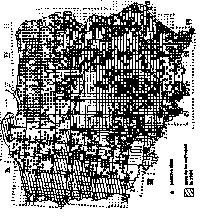 |
Last Update:
Friday November 23, 2018
|
| [Home] |
|
IUCN/SCC Otter Specialist Group Bulletin Volume 9 Pages 1 - 16 (March 1994) Citation: Romanowski, J. & Brzeziriski, M. (1994) Otter News from Poland IUCN Otter Spec. Group Bull. 9: 11- 13 Jerzy Romanowski1 and Marcin Brzeziriski2 1Institute of Ecology, Pol. Acad. Sc., Dziekantfw L., 05-092 Lomianki, Poland
1993 was a good year for both the otter and otter researchers in Poland. Much field work was conducted, including several master degree projects, and some results of earlier research were published. The most important news is that signs of increase in otter population were noted. 4736 spraints analysed Comparative studies of otter diet in different habitats were the subject of master degree theses of two students at the University of Warsaw. The rich data (total of 4228 spraints collected from six rivers in 1992-93) enabled interesting comparisons of the otter diet in various habitats and seasons (Kopczyrfski 1993, Kurowicka 1993). Studies in Bieszczady Mountains, a stronghold for the otter in Poland, revealed that fishes dominated in the diet, followed by insects, amphibians and crustaceans (Harna 1993). Brzezirtski et al. (1993) have demonstrated that otters inhabiting small rivers in Bialowieza Forest are capable of surviving almost entirely on frogs, insects and tiny fish. Around the world after Polish otters 1993 was the second year of otter census in Poland. The recommended standard survey method (Macdonald 1983, 1990) was used, based on 10km square grid. Four main investigators with the help of 12 volunteers formed two-person teams that spent 160 days in the field. To complete the survey of 1845 sites over 45 000 km were driven, which is more than enough to drive around the world along the equator. Almost all of the country was surveyed; the remaining area in west Poland (about 250 sites) will be visited early Spring 1994. The otter distribution in part of this area (Gorzáw region) is the subject of another master degree project, which is to be completed in June 1994 (M. Bartoszewicz, pers. com.). During the national survey the otter presence was recorded in 77 % of sites visited. The species is widespread in most of the country (Fig. 1). Two areas with no otter signs were identified in Southeastern (Silesia) and Central Poland. The species is common in Eastern Poland, where lakelands in the north and mountains in the south provide suitable habitats for thriving otter populations. During the survey signs of otters were found even in those localities, where the species was supposed to be absent, which could indicate the recent increase in otter population.
Conservation and threats The otter is considered a "game species with a year-round protection" in Poland since 1955. Recently the question of giving the otter full legal protection as a "protected species" was discussed (Dobrowolski & Wasilewski 1993, Romanowski & Brzeziiiski 1993). It is highly probable that the otter will become a protected animal in 1994. Otters are probably increasing in Poland, but a few threats can be seen. The distribution of otters is almost continuous, including all the biggest Polish rivers, which allows for dispersion. There is, however, a plan to develop the Vistula and some other main rivers into channels for transport. Gigantic money will be thrown away to repeat mistakes already experienced in some developed European countries. This may have dramatic consequences for the otter. In addition the current process of privatisation of fishing industry increases a pressure to solve the question of damages. The promotion of "otter-proof" fencing instead of paying for damages, and relocating the otters instead of illegal killing at fish ponds is needed in Poland. REFERENCES Brzeziriski, M., Je,drzejewski, W., & Jqdrzejewska, 8. (1993). Diet of otters (Lutra lutra) inhabiting small rivers in the Bialowieza National Park, eastern Poland. J. Zool., Lond. 230: 495 - 501. |
| [Copyright © 2006 - 2050 IUCN/SSC OSG] | [Home] | [Contact Us] |
